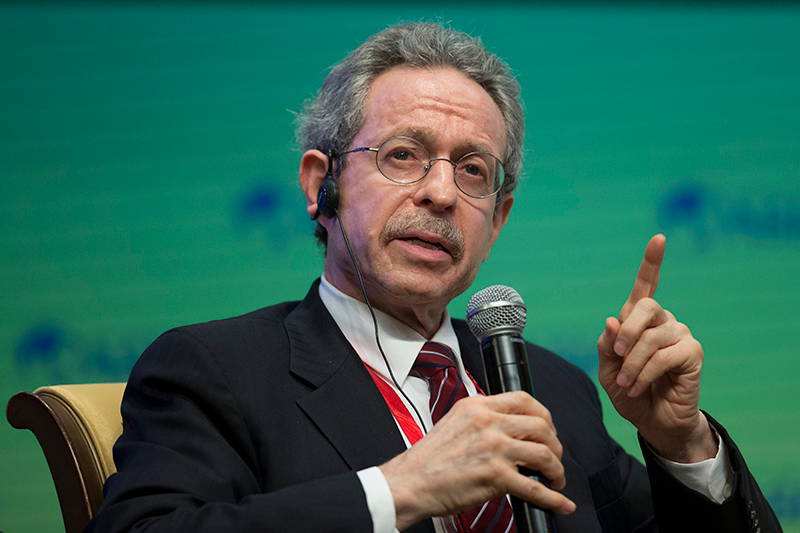As the 70th anniversary of the People’s Republic of China approaches, it is a time to appreciate the past in order to anticipate the future. China has accomplished a great deal, yet China’s greatest accomplishment is still under-appreciated: targeted poverty alleviation. It is the China story that must be told.

File photo of Robert Lawrence Kuhn
In the early decades of reform, leaders focused rightly on economic growth, which, as a natural consequence, brought hundreds of millions of Chinese out of poverty, the greatest developmental success story in human history. Intensifying after the 18th CPC National Congress in late 2012, when Xi Jinping became CPC general secretary, the realization set in that there were about 100 million Chinese who were intractably poor. Whether because of geographic isolation in remote mountain villages or because they didn't have sufficient education or decent jobs or because they were old or infirm, economic development would never be sufficient: no matter how much China’s economy would grow, no matter how large China’s GDP per capita would become, these intractably poor would remain intractably poor.
China’s first national goal is to realize a ‘moderately prosperous society’ by 2020 and President Xi asserts, wisely, that China cannot be a ‘moderately prosperous society’ if any of its citizens continue to live below the line of absolute poverty. I experienced first-hand the impact of Xi’s remarkable statement: ‘I have spent more energy on poverty alleviation than on anything else.’ I do not know of any other national leader who has given such a personal testimonial.
It was in November 2013, in a poor county in central China’s Hunan Province, that Xi first proposed the concept of “targeted” or “precision” poverty alleviation. He said, “Targeted measures should be made based on practical situations, and empty slogans should be avoided”.
“Targeted” means individualized attention, with the policies to support them, including identification criteria of poor people and customized plans and programs to bring each out of poverty. The success of China’s targeted poverty alleviation campaign, bringing 10 to 14 million people per year out of absolute poverty, depends on strict, quantitative and transparent procedures. It starts by defining absolute poverty with standardized methods, using annual income, but also including tests of adequate health-care, education and sanitation, like flush toilets.
Various methods of poverty alleviation are employed: industry, creating a sustainable micro-business; relocating, moving people from remote areas; education and training; ecological compensation for those living in environmentally vulnerable areas; and social security, medical subsidies and direct payments to those who cannot work. Every impoverished household is guaranteed help and every village has designated officials to carry out targeted measures. Five levels of local Party secretaries coordinate their roles – provincial, municipal, county, township, village. Third-party evaluations are conducted regularly and randomly to assure accuracy and honesty.
Empowering words with actions, President Xi regularly visits poor counties and villages across China, asserting the Party’s commitment to alleviate poverty. Some people outside of China may be surprised to learn that he considers poverty alleviation to be his most important task.
In order to tell the story of China’s targeted poverty alleviation to the world, I traveled across China for weeks, embedded in poverty alleviation programs. I met poor villagers, local officials, special monitors — those being lifted out of poverty, those assigned to do the lifting, and those recruited to do the checking. I followed cases to get a textured and intimate portrayal of China's poverty alleviation campaign and the systems and organization needed to implement it.
Certainly, I had known the extremes of poverty of China. Over the past 15 years I have visited all parts of the country, including the poorest regions - but still, as much as I thought I knew China, I was surprised by what I found.
I found that every poor family has its own file, a literal notebook, each with its own targeted plan to lift each above the line of absolute poverty — that’s millions of poor families with customized plans, each monitored regularly and reported centrally. I witnessed a “democratic evaluation” in a remote village, where villagers voted into poverty status one young man whose father had cancer, and cheered when another man was raised out of poverty status.
Equally startling, local officials are dispatched to impoverished villages to manage poverty alleviation. With career stakes high and funding vast, cheating and stealing should be no surprise. Of the 122,100 cases of corruption reported in China in 2017, 48,700 – more than one third – related to poverty alleviation work. It’s extraordinarily good that the government releases such unflattering statistics. China will not allow falsifying data, or misappropriating funds, to undermine its poverty alleviation goals.
At the beginning of 2019, the number of those still living in absolute poverty was down to 16.6 million; though lifting the last would be the hardest, China is on track to eliminate all absolute poverty by the end of 2020.
Those who recognize China’s unprecedented poverty-alleviation success must also recognize its causal relationship to China’s system of one-party-leadership rule, and a strong, command-down government. Without such robust authority, it would not seem possible for China to reach its poverty-alleviation goals.
I tell the story of China’s targeted poverty alleviation to give insight into the real China. I also want to change certain stereotypes about China. In my 20 years of telling the story of China to the world, I believe China’s targeted poverty alleviation campaign is the single most powerful story to undermine biases and change people’s understanding of China. When historians of the future write the chronicles of our times, a feature may well be China’s targeted poverty alleviation.
In December 2018, at the 40th anniversary of China’s reform and opening up, Dr. Robert Lawrence Kuhn was awarded the China Reform Friendship Medal. The medal honors 10 foreigners over the four decades; five are living, Dr. Kuhn is one of two Americans. Information and views set out in this article are those of the author.


